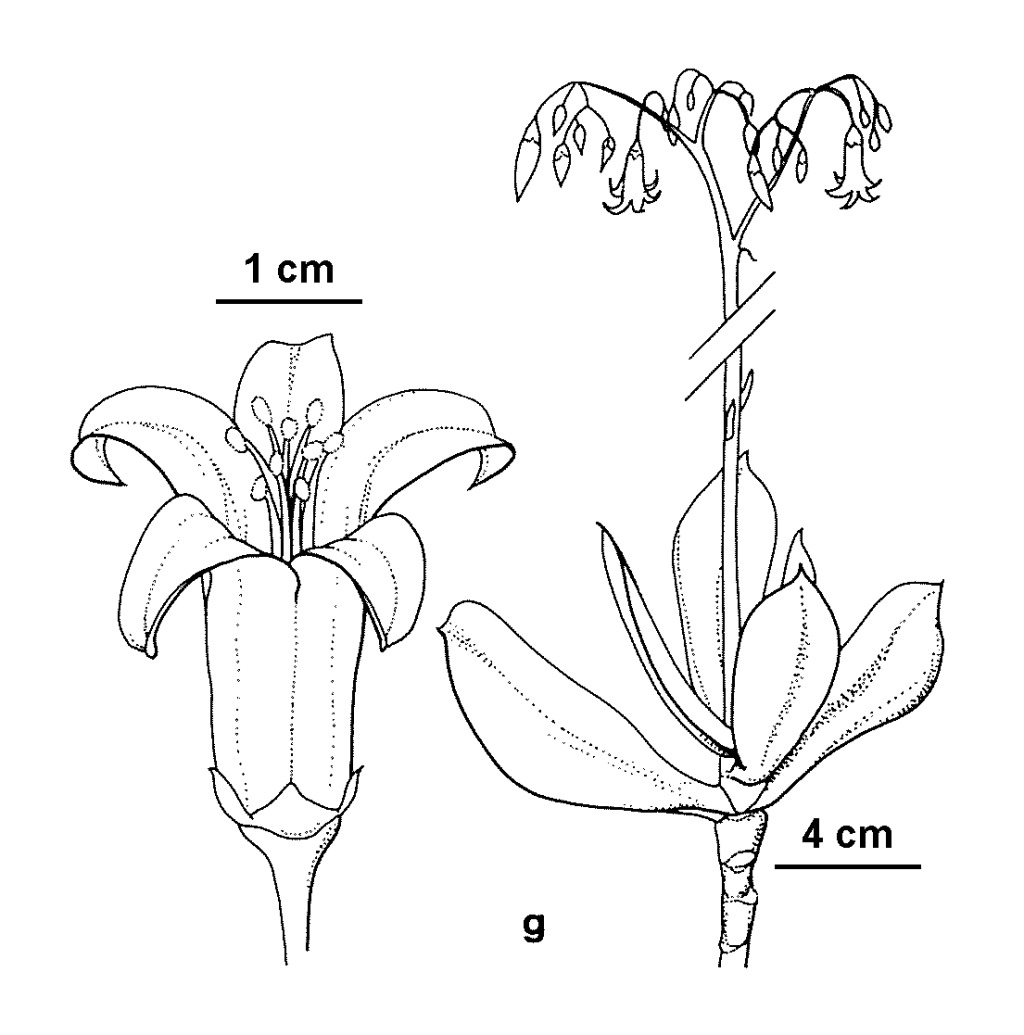Cotyledon orbiculata
L.Shrub to c. 1.5 m tall; branches spreading or decumbent. Leaves opposite or whorled, obovate to oblanceolate or narrow-linear, 3–14 cm long, 1–5 cm wide, apex rounded or cuspidate, base cuneate, margins reddish or pale, both surfaces convex, glabrous to hairy, green to grey, pruinose. Inflorescence 20–100 cm long, glabrous to hairy; peduncles 10–70 cm long; pedicels c. 1 cm long. Flowers pendulous; sepals broadly to narrowly triangular, 2–5 mm long, acute, glabrous, rarely hairy; corolla 7–40 mm long, often bulging in middle, red to orange, rarely yellow, lobes usually lanceolate, usually shorter than tube, recurved or recoiled; anthers 1.5–3.5 mm long; nectary glands fleshy, yellow; carpels slender, tapering into a long, slender style.
MuM, GleP, VVP, GipP, OtP, WaP, Gold, CVU, NIS, HSF.
Toelken (1985) recognised 5 varieties differing in growth habit, leaf arrangement, number of bracts on the peduncle, flowering time, length of corolla tube, relative length of corolla lobes etc. At least two of these varieties are naturalised in Victoria. Naturalised material, however, often includes what appear to be hybrids and cultivars that may not always comfortably fit into any of the recognized varieties.
Toelken, H.R.; Jeanes, J.A.; Stajsic, V. (1996). Crassulaceae. In: Walsh, N.G.; Entwisle, T.J., Flora of Victoria Vol. 3, Dicotyledons Winteraceae to Myrtaceae, pp. 542–555. Inkata Press, Melbourne.
 Spinning
SpinningToelken, H.R. (1985). Crassulaceae. In: Leistner, O.A., Flora of Southern Africa 14, pp. 1–230. Botanical Research Institute, Republic of South Africa.




